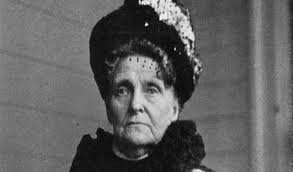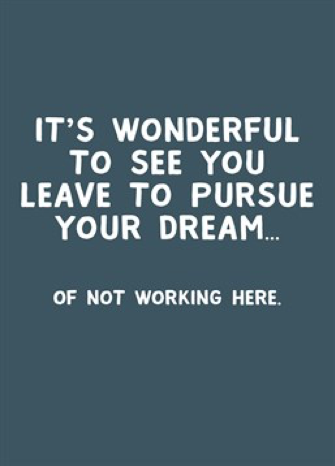October 16th, 2019
Capitalism’s Winners and Losers

Every era has the handful of companies that “can’t fail.” They dominate the economy and the stock market so powerfully that people can’t imagine them losing muscle. But they do, sometimes slowly, and sometimes spectacularly. Capitalism has winners and losers.
When I was growing up in Rochester, New York, the county was the 20th richest in the US by per capita income. Today, it clings precariously to a low rung. Rochester still has vibrant sectors, but it has never recovered from the downfall of Eastman Kodak and loss of 27,000 Kodak jobs in a city of 200,000. The tax base plummeted and the city is a shadow of its former self.
Companies do not always collapse as Kodak did, caught unaware by technological change even though Kodak first invented many of the technologies other companies killed it with, such as the digital camera. Companies get big, fat and complacent. They rise and fall.
One measure of success or failure is market value. “Market value” is what the stock market says a company is worth on any given day. You take the number of shares of stock and multiply them by the stock price. Say Hotel Marfa has 100 million shares of stock and the stock price is $20. The market value is 100,000,000 times $20, which equals $2 billion. On the stock exchanges, that is considered small. Apple’s market value is $1 trillion, over 500 (!) times Hotel Marfa’s. Market values rise and fall with the business performance and popularity of the companies.
If we look at the companies with the greatest market values over time, we see starkly that capitalism has winners and losers. Look at this snapshot of the top companies by market value in the US every ten years from 1980 to today:
| COMPANY | INDUSTRY | 1980 | 1990 | 2000 | 2010 | 2019 |
| IBM | Tech and services | 1 | 1 | 9 | ||
| AT&T | Communications | 2 | 9 | |||
| EXXON (EXXONMOBIL BY 2000) | Energy | 3 | 2 | 2 | 1 | 10 |
| STANDARD OIL OF INDIANA | Energy | 4 | ||||
| SCHLUMBERGER | Energy | 5 | ||||
| SHELL OIL | Energy | 6 | ||||
| MOBIL | Energy | 7 | ||||
| STANDARD OIL OF CALIFORNIA | Energy | 8 | ||||
| ATLANTIC RICHFIELD | Energy | 9 | ||||
| GENERAL ELECTRIC | Diversified holding company | 10 | 3 | 1 | 5 | |
| PHILLIP MORRIS | Tobacco and food | 4 | ||||
| ROYAL DUTCH PETROLEUM | Energy | 5 | ||||
| BRISTOL-MYERS SQUIBB | Pharmaceuticals | 6 | ||||
| MERCK | Pharmaceuticals | 7 | 9 | |||
| WAL-MART | Retail | 8 | 6 | 6 | ||
| COCA-COLA | Consumer products | 10 | ||||
| PFIZER | Pharmaceuticals | 3 | ||||
| CITIGROUP | Finance | 4 | ||||
| CISCO SYSTEMS | Tech | 5 | ||||
| MICROSOFT | Software | 7 | 3 | 1 | ||
| AIG | Insurance | 8 | ||||
| INTEL | Tech | 10 | ||||
| APPLE | Consumer tech | 2 | 2 | |||
| BERKSHIRE HATHAWAY (WARREN BUFFETT) | Diversified holding company | 4 | 5 | |||
| PROCTER & GAMBLE | Consumer products | 10 | ||||
| GOOGLE (ALPHABET) | Tech (online advertising) | 7 | 6-7 | |||
| CHEVRON | Energy | 8 | ||||
| AMAZON | Online retail, cloud services | 3 | ||||
| Online advertising | 4 | |||||
| JPMORGANCHASE | Financial services | 8 | ||||
| JOHNSON & JOHNSON | Pharmaceuticals and consumer products | 9 |
These are stark reminders of capitalism’s ruthlessness.
- Only one company on the list in 1980—ExxonMobil—is in the top ten thirty-nine years later in 2019.
- No industry dominated in more than one period. (Oil and gas dominated in 1980, then drug companies in 1990, tech, insurance and banking in 2000, a mix in 2010, and a massive shift to online businesses by 2019.)
- Only five businesses—General Electric, Wal-Mart, Microsoft, and ExxonMobil—appeared more than twice!
General Electric was in the top ten at four of the five points and is crashing and burning today. Wal-Mart grew huge on retail in physical stores, but today it’s displaced in the top ten by an online retailer, Amazon. Up and down, in and out they go. That’s capitalism. Given enough time, no business remains on top.
I have no crystal ball, but today seems in many ways like the late 1800s and early 1900s, when the concentration of wealth and business monopolies ruled. President Theodore Roosevelt’s administration led to breaking up of those powerful monopolies. The Justice Department and the Federal Trade Commission are rumbling today about the power of companies such as Facebook and Google, for example, and privacy violations. Whether through antitrust or competition and new technology, today’s giants are likely to be cut down to size, while others take their place. It’s a question of time.



 Everyone should follow Hetty Green’s advice to women: “It is the duty of every woman, I believe, to learn to take care of her own business affairs,” and “A girl should be brought up as to be able to make her own living…Whether rich or poor, a young woman should know how a bank account works, understand the composition of mortgages and bonds, and know the value of interest and how it accumulates.” (emphasis added)
Everyone should follow Hetty Green’s advice to women: “It is the duty of every woman, I believe, to learn to take care of her own business affairs,” and “A girl should be brought up as to be able to make her own living…Whether rich or poor, a young woman should know how a bank account works, understand the composition of mortgages and bonds, and know the value of interest and how it accumulates.” (emphasis added)


